
Great Mass in C minor, K. 427/417a, is the common name of the musical setting of the mass by Wolfgang Amadeus Mozart, which is considered one of his greatest works. He composed it in Vienna in 1782 and 1783, after his marriage, when he moved to Vienna from Salzburg. The large-scale work, a missa solemnis, is scored for two soprano soloists, a tenor and a bass, double chorus and large orchestra. It remained unfinished, missing large portions of the Credo and the complete Agnus Dei.
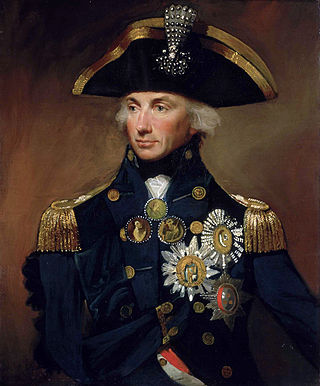
The Missa in angustiis, commonly known as the Nelson Mass, is a Mass setting by the Austrian composer Joseph Haydn. It is one of the six masses written near the end of his life that are seen as a culmination of Haydn's composition of liturgical music.

The Mass No. 3 in F minor, WAB 28, is a setting of the mass ordinary for vocal soloists, chorus and orchestra, and organ ad libitum, that Anton Bruckner composed in 1867–1868.
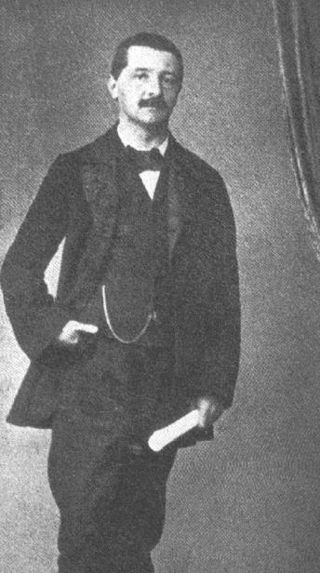
The Missa solemnis, WAB 29, is a solemn mass composed by Anton Bruckner in 1854 for the installation of Friedrich Mayer as abbot of St. Florian Abbey on 14 September 1854.
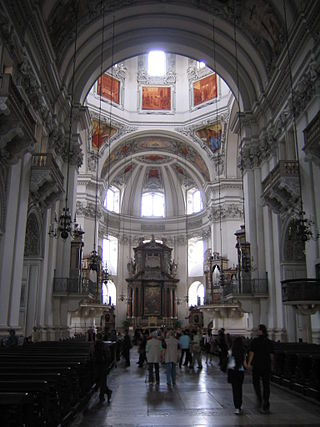
The Missa brevis No. 9 in B-flat major by Wolfgang Amadeus Mozart, K. 275/272b, was probably written before September 1777 for Salzburg. The mass is scored for SATB soloists, SATB choir, violin I, violin II, 3 trombones, string bass, and organ.
Austrian composer, Michael Haydn's Missa Hispanica or Missa a due cori, Klafsky I:17, MH 422, was presumably written for Spain, but there is no evidence of its ever having been performed there during Haydn's lifetime. The mass is scored for 2 oboes, 2 bassoons, 2 horns in low C, F and G, 2 trumpets in C, timpani, strings, basso continuo, SATB soloists, and two mixed choirs.
Michael Haydn completed the Missa in honorem Sanctae Ursulae, Klafsky 1:18, MH 546, on August 5, 1793, probably for use at the ceremony in which Ursula Oswald, the daughter of a friend, professed her religious vows at the Benedictine Abbey of Frauenwörth Chiemsee. Because of that fact, the Mass is sometimes known as the Chiemsee Mass.

The Mass No. 1 in D minor, WAB 26 by Anton Bruckner, is a setting of the Mass ordinary for soloists, mixed choir and orchestra, and organ.

The Missa brevis No. 8 in C major, K. 259, is a mass composed by Wolfgang Amadeus Mozart in 1776. It is scored for SATB soloists, SATB choir, violin I and II, 2 oboes, 2 clarini, 3 trombones colla parte, timpani and basso continuo.
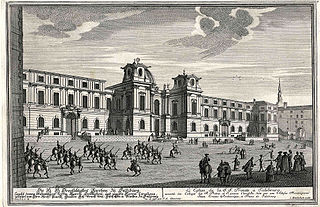
The Missa in honorem Sanctissimae Trinitatis in C major, K. 167, is a mass composed by Wolfgang Amadeus Mozart in June 1773. It is scored for SATB choir, violin I and II, 2 oboes, 2 clarini, 2 trumpets, timpani and basso continuo.

The Missa solemnis in C major, K. 66, is a mass composed by Wolfgang Amadeus Mozart in 1769. It is scored for SATB soloists and choir, violins I and II, viola, 2 oboes, 2 horns, 2 clarini, 2 trumpets and basso continuo.

The Missa brevis in D major, K. 194/186h, is a mass composed by Wolfgang Amadeus Mozart and completed on 8 August 1774. It is scored for SATB soloists, SATB choir, violin I and II, 3 trombones colla parte, and basso continuo.
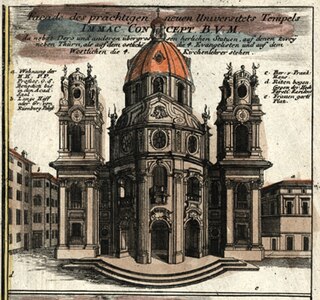
The Missa brevis in D minor, K. 65/61a, is a mass composed by Wolfgang Amadeus Mozart and completed on 14 January 1769. It is scored for SATB soloists and choir, violin I and II, 3 trombones colla parte, and basso continuo.
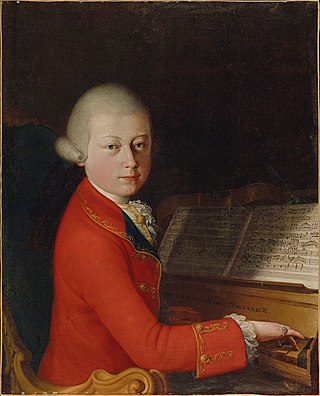
Mozart's Mass in G major, K. 49/47d), is his first full mass. It is a missa brevis scored for SATB soloists and choir, violin I and II, viola, and basso continuo.

Mass No. 1 in F major, D 105, is a mass composed by Franz Schubert in 1814. It is scored for two soprano soloists, two tenor soloists, alto and bass soloists, SATB choir, oboe, clarinet, bassoon, 2 horns, violin I and II, viola, and basso continuo. It was the first of Schubert's masses to be performed, and is of the missa solemnis type.

Mass No. 4 in C major, D 452, is a mass composed by Franz Schubert in 1816. It was originally scored for soprano, alto, tenor and bass soloists, SATB choir, violin I and II, and basso continuo. It is classified as a missa solemnis.

Mass No. 5 in A-flat major, D 678, is a mass composed by Franz Schubert, completed in 1822. There is no record of a performance during Schubert's lifetime. It is scored for soprano, alto, tenor and bass soloists, SATB choir with divisi, violin I and II, viola, flute, 2 oboes, 2 clarinets, 2 bassoons, 2 horns, 2 trumpets, 3 trombones colla parte, timpani and basso continuo. It is classified as a missa solemnis.
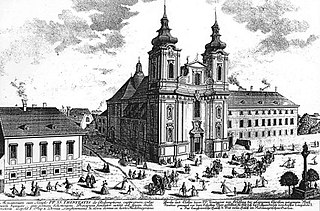
Mass No. 6 in E-flat major, D 950, is a mass composed by Franz Schubert, a few months before his death. It is scored for two tenor soloists, soprano, alto and bass soloists, SATB choir with divisi, 2 oboes, 2 clarinets, 2 bassoons, 2 horns, 2 trumpets, 3 trombones, timpani, violin I and II, viola, cello, and double bass. It was Schubert's final setting of the order of Mass, and is classified as a missa solemnis.
Missa Sancti Nicolai, Mass No. 6 in G major, Hob. XXII/6, also known as the Nicolaimesse, is a mass by Joseph Haydn, composed around 1772 and revised in 1802.

Mozart Mass K. 139 is a 45-minute classical studio album on which Mozart's Waisenhaus-Messe is performed by Gundula Janowitz. Frederica von Stade, Wiesław Ochman, Kurt Moll, the Chorus of the Vienna State Opera and the Vienna Philharmonic Orchestra under the direction of Claudio Abbado. It was released in 1976.














